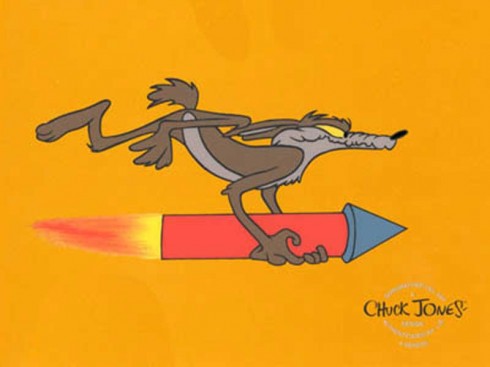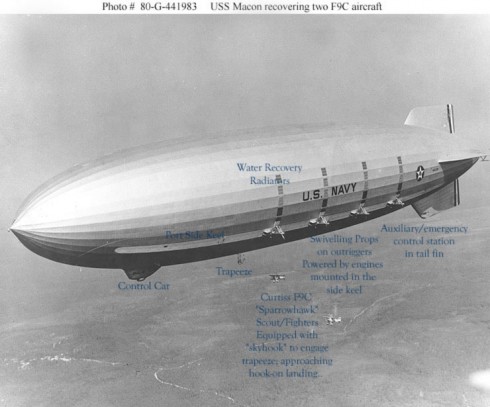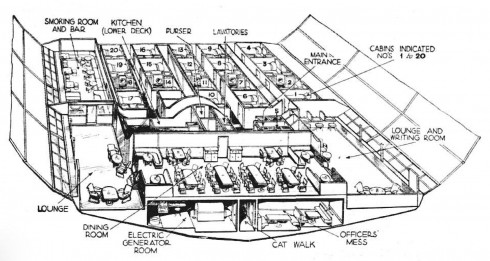The Wile E. Coyote Problem
 As a child I found watching the trials and tribulations of Wile E. Coyote quite frustrating. After ordering, constructing, and deploying whatever Acme device he’d chosen to assist in capturing his dinner, the result was always the same: he’d come tantalizingly close to a full belly, only to be defeated by a sudden cliff or tunnel entrance.
As a child I found watching the trials and tribulations of Wile E. Coyote quite frustrating. After ordering, constructing, and deploying whatever Acme device he’d chosen to assist in capturing his dinner, the result was always the same: he’d come tantalizingly close to a full belly, only to be defeated by a sudden cliff or tunnel entrance.
Then he’d give up.
USS Macon (ZRS-5) was a rigid airship built and operated by the United States Navy for scouting. She served as a flying aircraft carrier, launching Sparrowhawk biplanes. – wikipedia

I feel, unfortunately, that airships have a lot in common with Mr. Coyote – humanity made an effort to utilize the sky-behemoths, but, once issues were encountered, we simply discontinued the attempt.
The cause of the loss was operator error following the structural failure and loss of the fin. Had the ship not been driven over pressure height (where the cells were expanded fully and lifting gas released) Macon could have made it back to Moffett Field. – wikipedia
The loss of the Macon, and its sister ship, the Akron, were the end of large-scale North American attempts at rigid-structure airships. A combination of World War II, and the Hindenburg, were enough to seal the deal globally.
Instead of checking our equations, touching up the paint on the fake tunnel, and adjusting the straps on our rocket skates, we dropped everything and went on to trying to drop an anvil on the bird’s head.
Consider what the skies might have been under the Imperial Airship Scheme:
The Burney Scheme, known after Sir Dennistoun Burney, was proposed to Vickers in 1921 for the construction of commercial airships for establishing airline services between Britain and the colonies of the British Empire. The Admiralty became involved because it saw the scheme as a means of continuing airship technology and operational experience at modest cost via subsidies, just as it subsidized British passenger ships – wikipedia
– but then, I suppose, many ideas get left behind. There may be an alternate universe out there in which a businessman from New York is considering the lost concepts of the Wright brothers, while bedding down for his second night on board a Virgin Airways zeppelin to London.

Coincidentally, the man in charge of the Macon? Lt. Commander Herbert Wiley.
There are those who believe that large airships are indeed still in use today. Secret stealth technology or mass hysteria?
http://www.thestealthblimp.com/
Jeff
Oooh, verah interestin’.
Actually there’s a new airship in development up in your neck of the woods:
http://www.theregister.co.uk/2011/03/28/p791_ordered_for_canadian_oilsands/
It lacks the grace of its predecessors though. By far.
Ugh; Well, it may not be majestic, but at least it’s moving the technological-ball forward a bit – maybe tugs today will mean cruise ships tomorrow.
The military didn’t just give up on them. They realized that these vehicles would always be at the mercy of the weather, and there was plenty of weather all over the world.
Lighter-than-air doesn’t work well because air moves too much. You are a feather in the winds.
Fair point, though weather was also an issue for the tall ships and somehow we didn’t give up on boats.